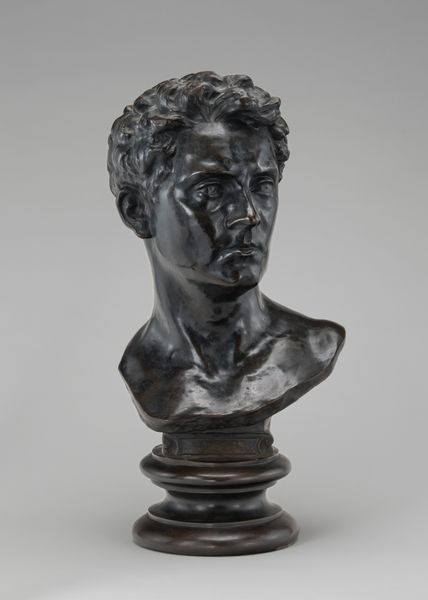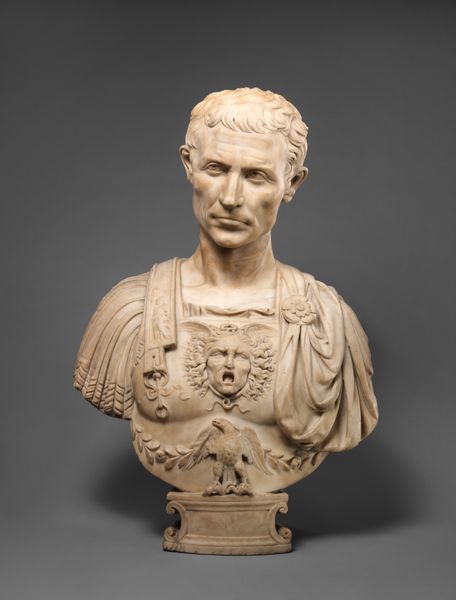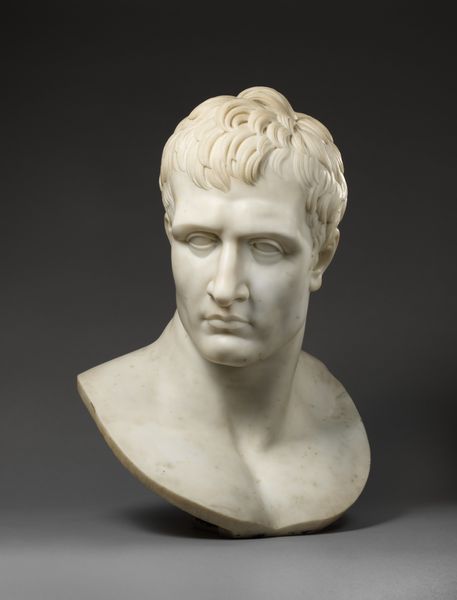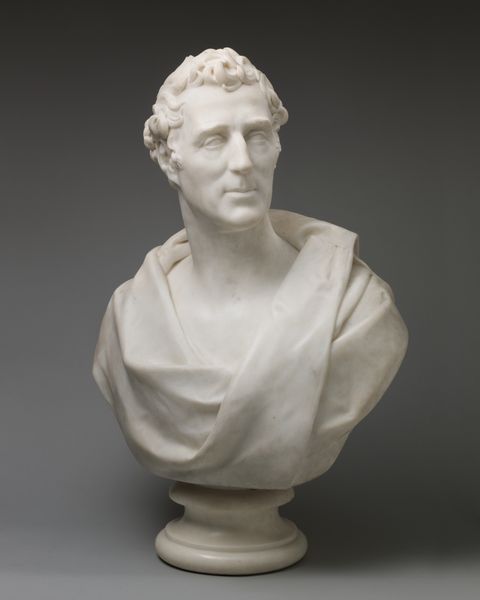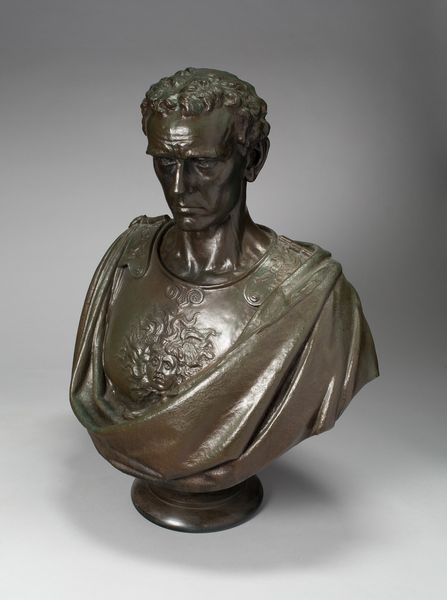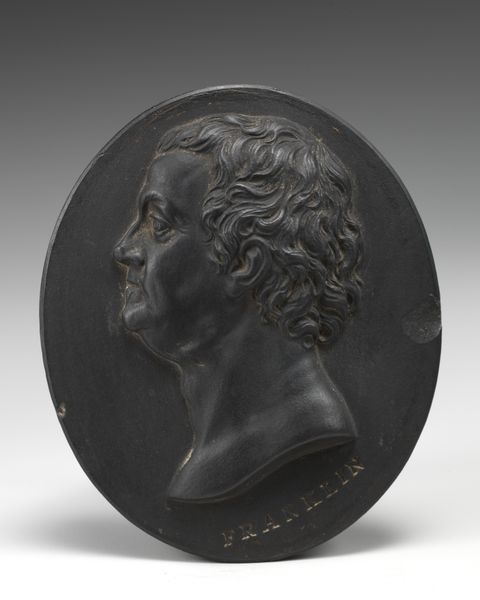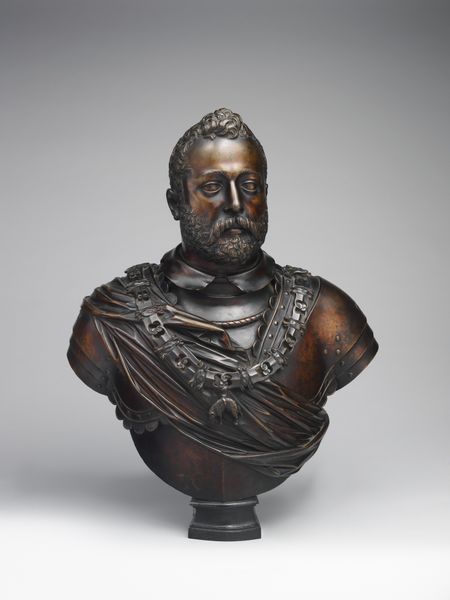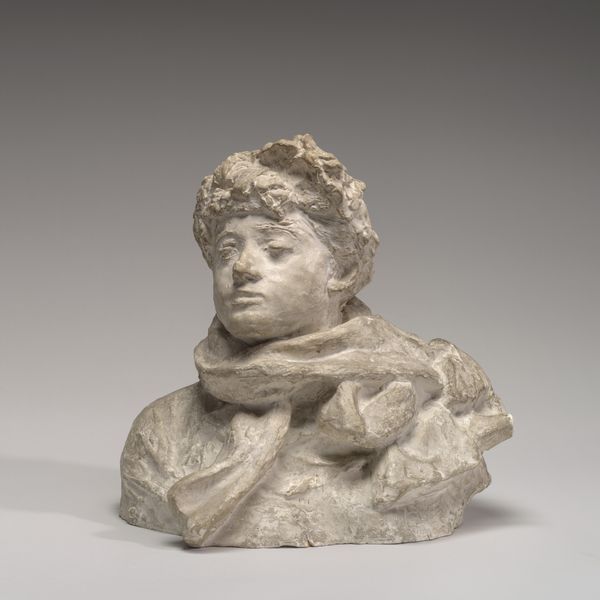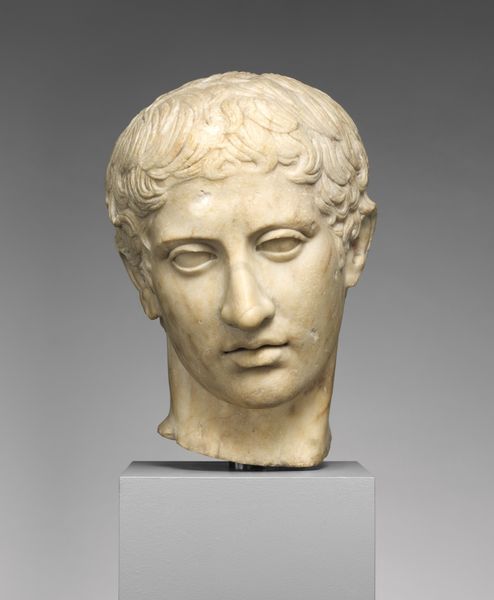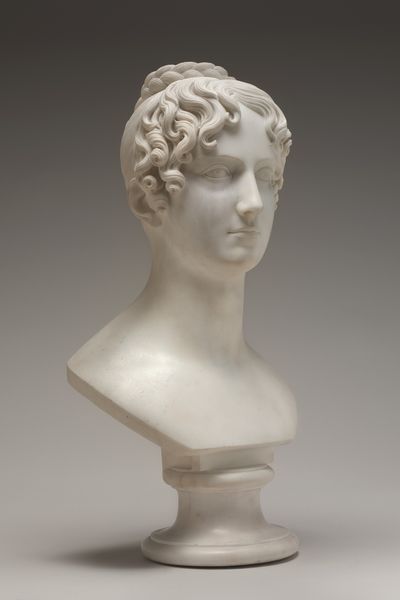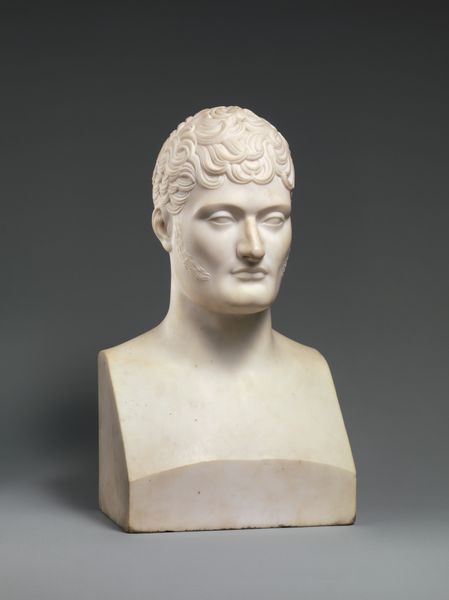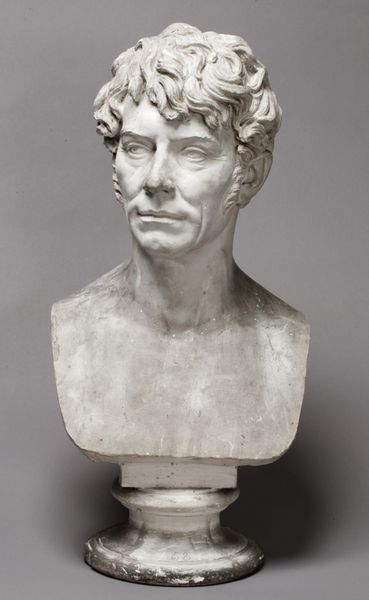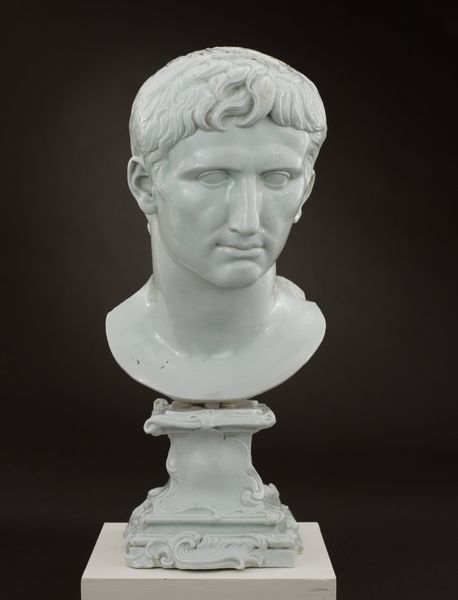
Ottavio Farnese, Duke of Parma and Piacenza 19th - 20th century
0:00
0:00
bronze, sculpture
#
portrait
#
sculpture
#
bronze
#
sculptural image
#
form
#
11_renaissance
#
sculpture
#
men
#
decorative-art
Dimensions: Height without base: 8 1/2 in. (21.6 cm)
Copyright: Public Domain
Curator: Welcome! Let’s take a closer look at this sculptural image entitled "Ottavio Farnese, Duke of Parma and Piacenza". Although attributed to Pastorino de Pastorini, and created sometime in the 19th or 20th century, it depicts a figure from the Italian Renaissance. Editor: The immediate impression I get is one of strength, even defiance. The bronze lends a weight and solidity, but there's also remarkable detail in the modeling, especially the texture of the hair and the intricate design on the armor. Curator: The Farnese family was incredibly influential; their patronage shaped much of Renaissance art and politics. The duke himself, Ottavio, was a complex figure, navigating papal politics and consolidating power. It’s worth considering how a later artist chose to represent this historical figure. What choices were made in terms of idealization or realism, and what purpose might this sculpture serve? Editor: The emphasis on form is compelling. Observe how the light catches the high points of the cheekbones and the way the armor shapes the overall silhouette. There’s a deliberate contrast between the smoothness of the face and the busyness of the armour. Curator: Right, and consider the purpose of decorative art—to commemorate and celebrate individuals and their lineages. Sculptures like this not only depicted their subjects, but also served as potent symbols of status and authority within particular socio-political networks. I'd also argue it is designed to project unwavering power. Editor: And notice how that serious expression locks the viewer’s gaze. There is little space for ambiguity; he seems impenetrable. Despite the later date, it evokes a kind of Renaissance gravitas. The bronze finish is not shiny or idealized, lending him a realism and stern quality, perhaps intentionally avoiding glamorization. Curator: Well, our interpretations reflect how art acts as a cultural bridge between epochs. This bust serves both as a historical portrait and a work reflective of later artistic intentions, asking viewers to contemplate shifting valuations and approaches. Editor: Yes, analyzing the sculptor’s focus and artistic style lets us consider an artist’s interpretation of history through artistic expression, while inviting personal connection with art across time.
Comments
No comments
Be the first to comment and join the conversation on the ultimate creative platform.
